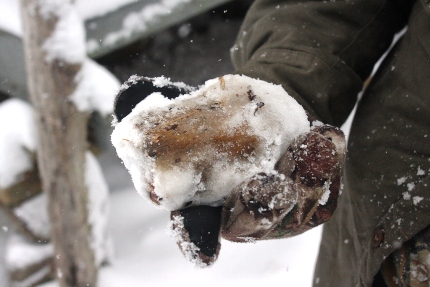Last updated on February 20th, 2021 at 02:53 pm
From 16 to 23 March 2010 the TBRC had one or more members present at a remote mountainous location in southeast Oklahoma. Wildlife biologist John Mionczynski—at the behest of the TBRC—traveled from Wyoming specifically to join the team during the field research operation. TBRC investigators present included Alton Higgins, Paul Bowman, Chris Buntenbah, Jerry Hestand, Mark Porter, Ken Stewart, Mark McClurkan, Alex Diaz, Bob Yarger, Bill Coffman, Phil Burrows, and Brad McAndrews.
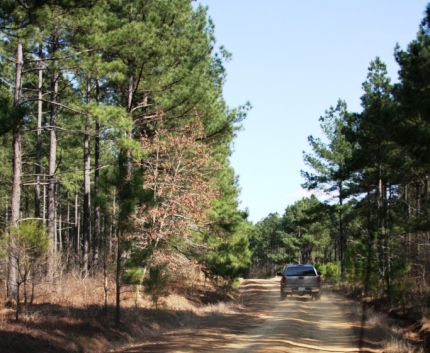
The primary order of business for the team during the operation was to make the arduous hikes to the various cameras situated in the area as part of Operation Forest Vigil. This task included changing batteries, downloading images, and general camera maintenance and/or replacement.
The pleasant evening of the 19th was occupied by campfire camaraderie, a peaceful prelude that did not portend subsequent inclement weather and events.
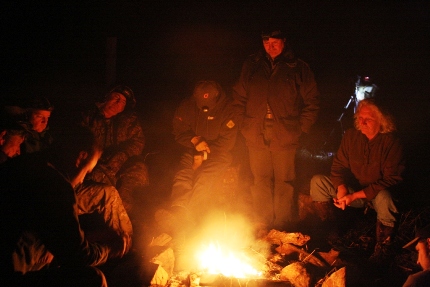
Saturday the 20th saw steady rainfall throughout the day. Camera maintenance and upgrading tasks were completed by late afternoon. Forecasters were predicting a nine percent chance of snow in the mountains; little did the team realize that the nine percent would translate into a near blizzard. Deciding that discretion was the better part of valor, some team members opted to leave early and undertake the long rough road out of the area before it became too treacherous.
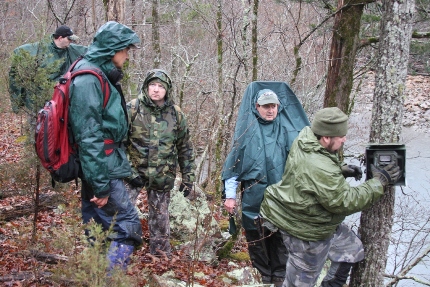
Those remaining spent stimulating hours in discussions with John Mionczynski until late into the night. TBRC board members Paul Bowman and Alton Higgins both later lamented not recording the conversations for others to hear.
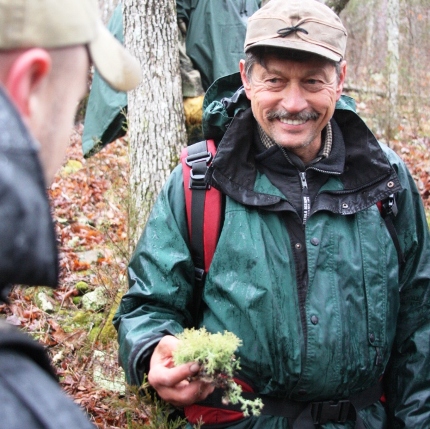
Team members split into two groups for sleeping arrangements, with three men, Alex Diaz, Mark McClurkan, and Bob Yarger moving to a hunting cabin about one hundred fifty yards upstream from where the others stayed. The cabins were situated in dense forest. Fortunately, both cabins had freestanding wood-burning furnaces.
During the early morning hours, around 3:30 A.M., Alex Diaz awoke to the cold and got up to add firewood to the furnace. He described what happened next: “A few minutes later I noticed, as I attempted to get back to sleep, that Mark McClurkan had gotten up and was stoking the fire … Mark was rekindling the log to get the cabin warmed up when he heard what he described as a large rock hit the front of the cabin. I remember hearing him say, ‘Alex, Alex, did you hear that?’”
Yarger also reported hearing something hit the cabin and the tin roof on the porch. A small bat roosting under the tin roof chirped loudly after the object struck the cabin. McClurkan had also heard something strike or pull on the wire fence that surrounds the cabin. The men speculated that, with the cabin situated adjacent to the steep bank of the creek, something out in the creek might have struck or pulled on the fence.
The three men hurriedly exited the cabin with night vision, bear spray, and flashlights. After scanning the surrounding forest through the driving snowstorm with night vision, they searched the area around the cabin with flashlights for signs of footprints or other evidence.
A river rock was observed on the snow near the porch. Small tree trunks cut for the purpose, but not stripped of their bark, supported the porch. Each of the poles was covered with snow, but the corner pole near the rock gave evidence of having been hit by the rock. Snow and bark had been knocked off the pole. As the pole was examined more closely the following morning with better light, they could better see the recent nature of the damage to the pole, including a noticeable dent. The men took pictures of the knocked off bark and an area over a foot long where snow had been knocked off, then reported the events to those in the other cabin. As the circumstances were recounted, speculation centered on the possibility that the rocks had been heaved from the far side, not the cabin side, of the creek.
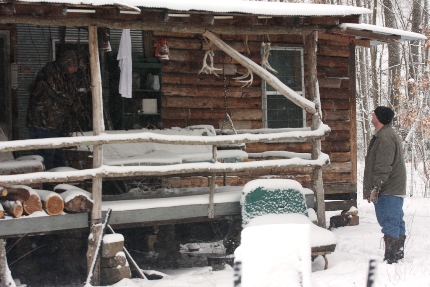
The snow was still falling. At least eight inches had accumulated overnight. Under the best of conditions, the steep rocky road into the study area can be hazardous. With the worsening weather, Mionczynski had planned to depart with the rest of the TBRC team on Sunday, realizing the wisdom of traveling in the company of other vehicles when traversing treacherous roads. However, the report of the rock-throwing incident caused him to change his mind.
Leaving Mionczynski to fend for himself, the remaining four vehicles exited in the continuing snowstorm. One vehicle did get stuck, encountering difficulty surmounting a steep icy slope, but everyone finally made it out to the nearest paved road by 1:00 P.M.
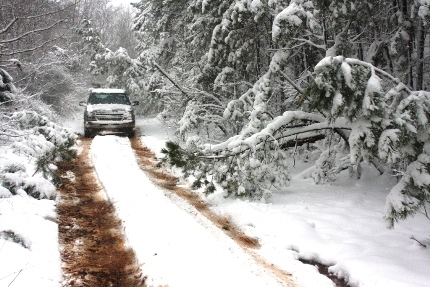
In the following days, Mionczynski decided to undertake a hike along the top of a nearby mountain, traversing about eight or nine miles through the thick forest. On his return, just after dropping off the mountain, he heard a loud prolonged scream/howl. The wildlife biologist who has spent decades living in the bush studying large mammals, including bighorn sheep (Ovis canadensis) and grizzly bears (Ursus arctos horribilis), was unable to identify the source of the vocalization, that is, the species responsible, but he said it had to have been very large. The sound came from the top of the mountain, where he had walked minutes earlier. He reported having the distinct sense that the animal giving the call had followed him. Obligated to return to Wyoming for other commitments, Mionczynski was forced to depart shortly thereafter.
It is important to add that similar incidents have been experienced by TBRC investigators on occasion in this area since 2001. Moreover, the owners of the cabins have independently noted in the cabin logbook over the last ten years a number of kindred events such as: rock-throwing incidents, visual and aural encounters, and banging on the exterior cabin walls at all hours of the night. One of the more prominent incidents that last occurred involving TBRC investigators was in September 2008 when the team repeatedly heard peculiar vocalizations and a number of large seemingly basketball-sized rocks being heaved in very close proximity to the cabins. The strange incidents have almost all taken place between the months of June and December. Thousands of TBRC camera-trap photographs from the area have provided empirical documentation that black bear (Ursus americanus) activity clearly subsides in December as the hibernation period begins and resumes like clockwork in late March/early April as hibernation terminates. The incident of March 2010 was unique in that it was the first incident of its kind that TBRC investigators have experienced outside the historically-documented range of summer-autumn months.
The events of the week of 16 to 23 March 2010, and other events that have happened during previous visits in the last decade as noted above, continue to give the TBRC reason to posit that the target species does frequent the area. A dozen or so Reconyx cameras continue their tireless vigil for the TBRC, albeit of the tiniest percentage of the intriguing Area X.
